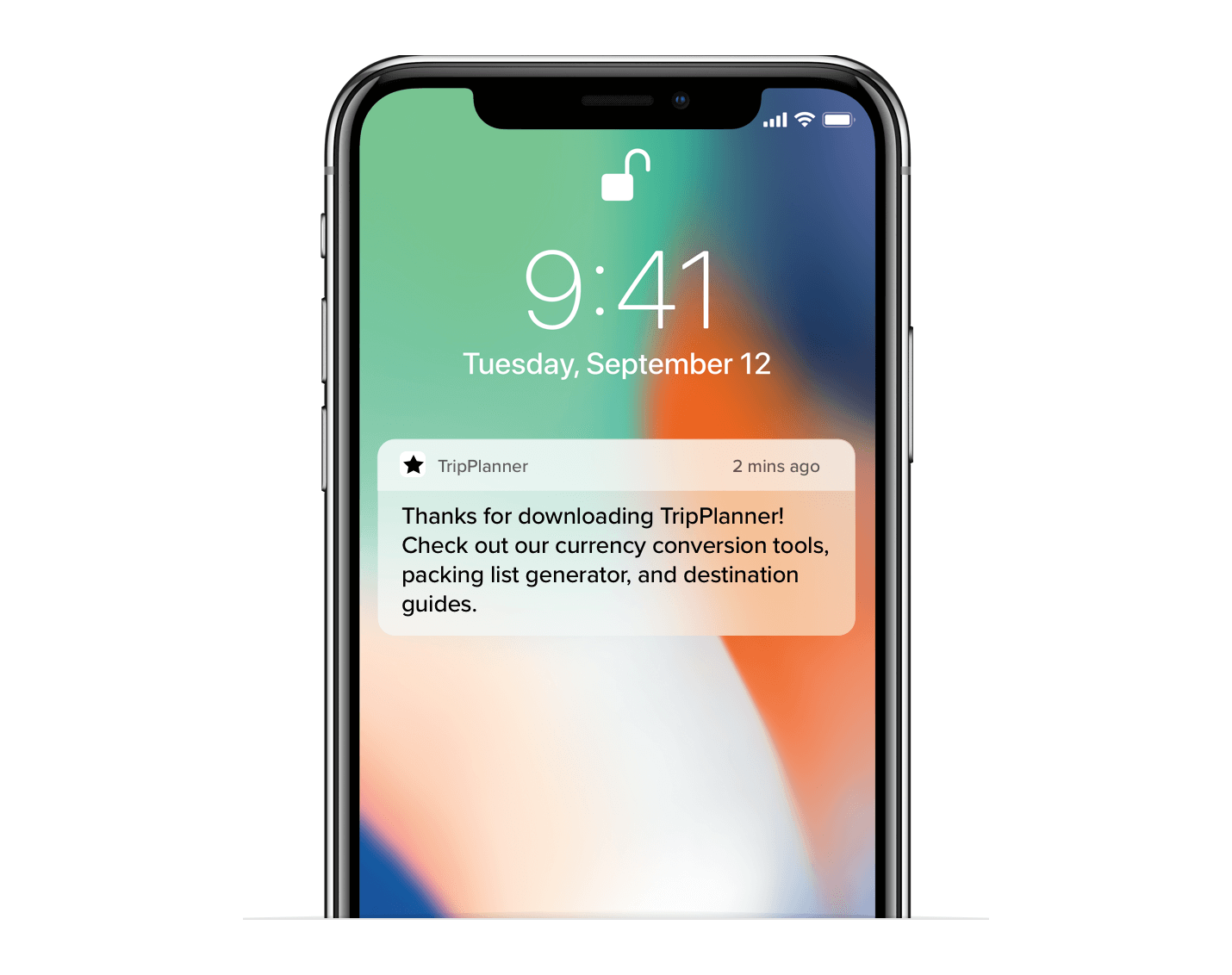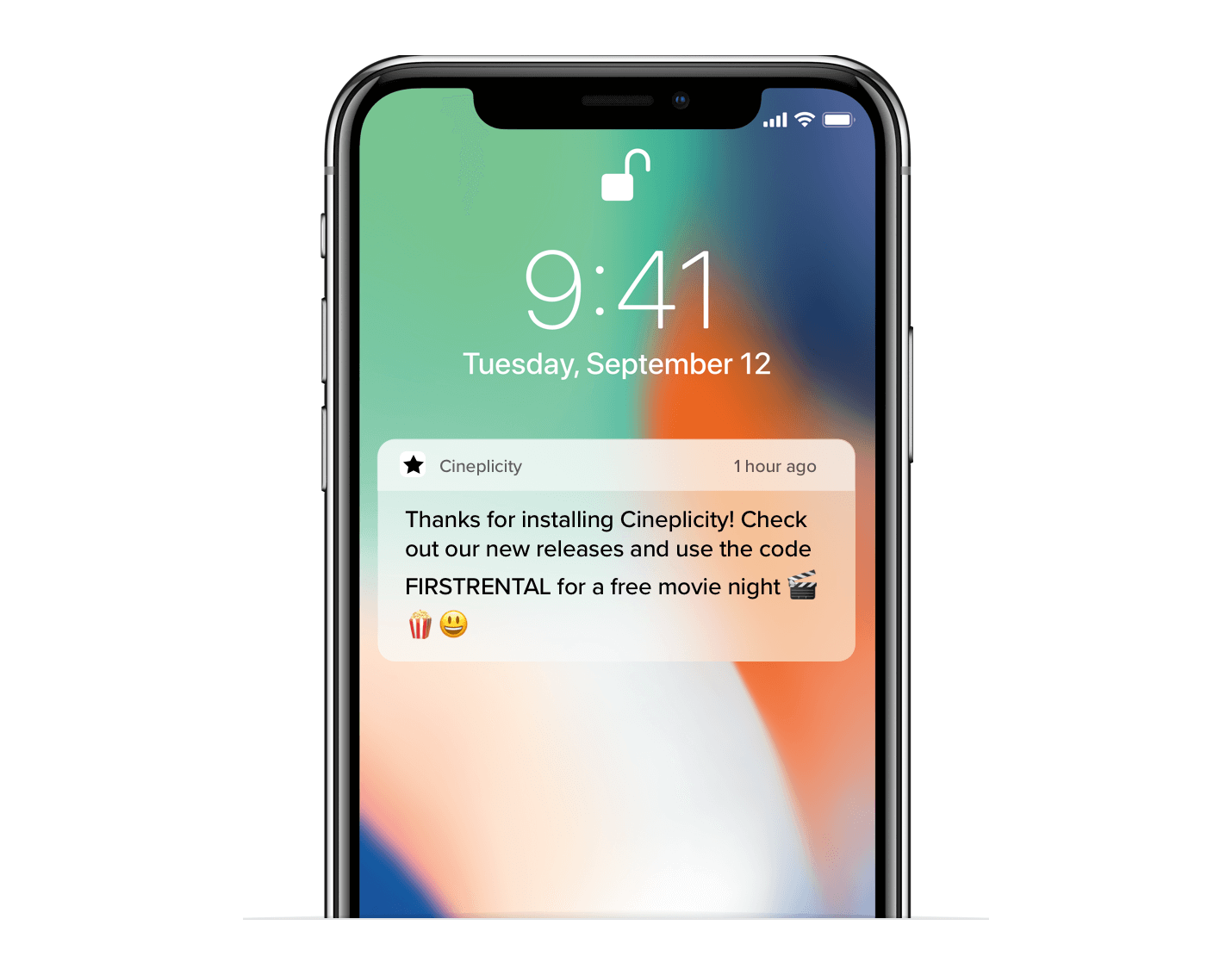The smartphone is our everyday companion, which we always carry with us. 23 percent of users between the ages of 18 and 34 would rather abandon one of their senses than their smartphone (tappable). For companies the smartphone offers invaluable access to their customers’ lives. On the one hand customers can be reached at any time via this device and on the other hand they can provide location data that can be used to track the (buying) behaviour of users and to draw important conclusions for marketing. This makes it all the sadder that 79 percent of the apps are no longer opened after one day of installation (Adjust). We will show you how you can increase the retention rate of your users through push notifications and in-app messaging, improve commitment and thus strengthen customer loyalty.
- Send welcome messages:It doesn’t have to be much, a simple “Hi” can work wonders. Welcome the new user and briefly explain the advantages and core features of your app. Studies have shown that simple greeting messages can significantly reduce app uninstallations.
- Offer an app tour:Although apps should of course be designed intuitively right from the beginning and make it as easy as possible for users to find their way around, a lot of apps require explanation despite intuitive operation. To find a remedy offer an app tour to users who open the app for the first time and clearly explain the key features of your product.
- Announce new features and updates:Keep your users aware of new features in your app. This makes it clear that you are investing in the use of the app and that the user experience is permanently improving. If the use of the app has fallen asleep give your customers new reasons to look into the app again and thus get a new opportunity to convince with your services.
- Don’t be pushy:In-app messaging requires the right permissions from your users. But don’t be too pushy when requesting this permission. For example you might want to get the approvals during the app tour the first time you open the app when you’re already informing your users about the benefits and features of your app.
- Increase user engagement:Try to offer additional benefits on top of the general advantages of the app. When a user has registered, personal data is generated and will provide you with further insights and help you to create an offer that perfectly suits your customers.
- Use A/B testing:Even if you have thought a lot about the in-app messages and are convinced that they will cause user reactions, you can still be very wrong. Use A/B testing to see what addresses, call to actions etc. work particularly well for your customers. Pre-sampling tests can also be used here, in which you first send different variants to smaller user groups and then play out the elements that work best to the entire group.
- Actively promote app evaluation:Social Proof is one of the most important factors when it comes to buying or downloading decisions. Therefore, actively approach your new users and ask them to rate your App in App Store or Google Play. The ratings give you valuable feedback that you can use to improve your app. In addition, positive reviews promote the visibility of your app in the relevant stores and can thus help to generate more new users.
- Set on the right timing:As already mentioned, there aren’t many chances to convince with your app. If the user finds the message annoying he will probably delete the app shortly afterwards. Therefore, use tools to optimize the sending time and to see what works best. This way you can adjust your customers’ engagement history for your purposes and according to that modify the marketing frequency.
- Use real-time customer data:Since in-app messaging is a real-time tool, you should ensure that customer data is always up-to-date, for example when a trigger is activated. Many customers get annoyed when, for example, they are offered products they have already purchased.
- Use multiple strategies:Apps offer several ways to communicate with your users. Besides push notifications, in-app messages are also an option. Especially for users who have not given an opt-in for push notifications, in-app messages are a good way to get in touch.
Bottom line
Apps don’t have it easy today. They compete in a highly competitive field for visibility and users. Many apps do not even survive the first days after installation on the smartphone. However, if they manage to survive the first few days, they can provide you with valuable information about your users and also provide a permanent way to get in touch with customers. Push notifications and in-app messaging are effective ways to show your customers the value of your app and increase their user experience. However, there are a few points to keep in mind. But when used correctly, it’s definitely worth the effort.

